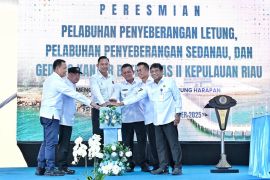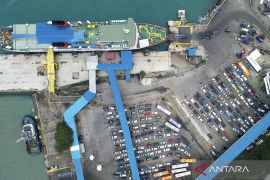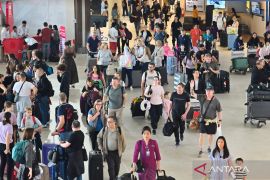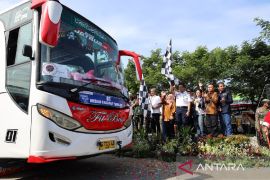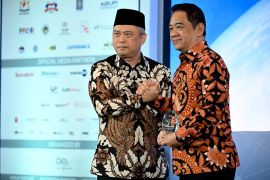Transportation Minister Budi Karya Sumadi said that during President Widodo's 10-year term, connectivity between regions became stronger, with increased transportation accessibility and service integration.
"In line with the Medium-Term Development Plan or RPJMN, the Ministry of Transportation has built and rehabilitated/revitalized 521 physical infrastructures in the transportation sector in the last decade," he added here on Tuesday.
One of the challenges to transportation development in Indonesia, he said, was the continued inequality between regions in the country.
Therefore, the government emphasized the need to build transportation infrastructure to improve connectivity and public mobility.
According to the ministry, the 521 transportation infrastructures built comprised 157 land transportation, 193 sea transportation, 91 air transportation, as well as 80 railway infrastructures.
Some of the infrastructures were built as part of National Strategic Projects (PSNs), including the New Nabire Airport, the Jakarta-Bandung high-speed railway, and Patimban Port.
"We also continue to develop technology-based transportation, such as the Jabodebek LRT (Light Rapid Transit) and the Autonomous Rapid Transit in Nusantara—which is a train without a driver—as well as the Jakarta-Bandung high-speed train," Sumadi noted.
In addition to building physical infrastructure, the Ministry of Transportation is also continuing to strive to improve services through regulatory simplification, ease of licensing, good governance, innovation, and digitalization of services, as well as increasing footprint in the international arena.
Meanwhile, to support connectivity in disadvantaged, remote, outermost, and border areas, the ministry has introduced pioneering services through the air bridge program, sea toll, bus, and pioneer train.
The air bridge route, which started in 2017, has succeeded in reducing the prices of goods by 30–70 percent.
Meanwhile, in the railway sector, there are 10 pioneer train routes that support accessibility to major city centers.
In the land transportation sector, there are 322 pioneer routes, with average route growth recorded at 1.48 percent from 2014 to 2024. In the sea sector, as many as 39 sea toll routes connect points in the west and east of Indonesia.
At the same time, the Ministry of Transportation is also strengthening urban transportation by providing urban mass public transportation infrastructure, both road and rail-based.
Road-based urban mass public transportation services are being provided through the buy-the-service scheme.
Meanwhile, to provide rail-based mass public transportation services, several transportation options are available, including LRT, MRT (Mass Rapid Transit), and high-speed trains.
Sumadi urged people to use public transportation services and reduce the use of private vehicles to avoid congestion in urban areas.
The Ministry of Transportation is also encouraging creative funding through the government and business entity cooperation scheme to accelerate the development of transportation facilities and infrastructure amid state budget limitations.
The creative financing programs that have been successfully implemented so far include the development of the Bekasi Proving Ground, Patimban Port, and Dhoho Kediri Airport.
Sumadi said he hopes that transportation developments in the next administration are sustainable and bring greater benefits to the community.
Related news: Indonesia's sea toll cuts price disparities across regions: minister
Related news: Over 1,700 km of rail tracks built during 2015-2024 period: Govt
Translator: Muhammad Harianto, Yashinta Difa
Editor: Azis Kurmala
Copyright © ANTARA 2024

